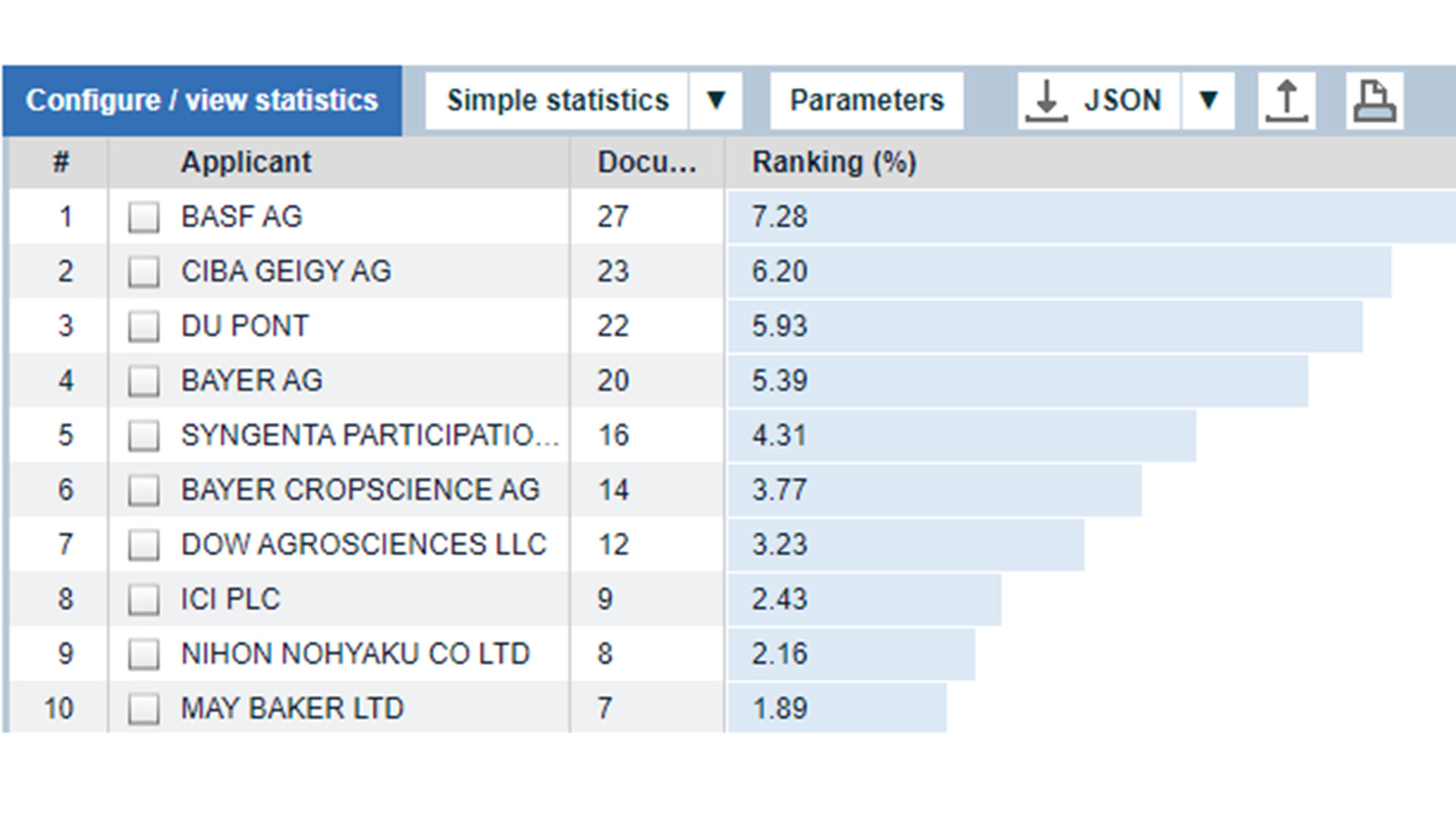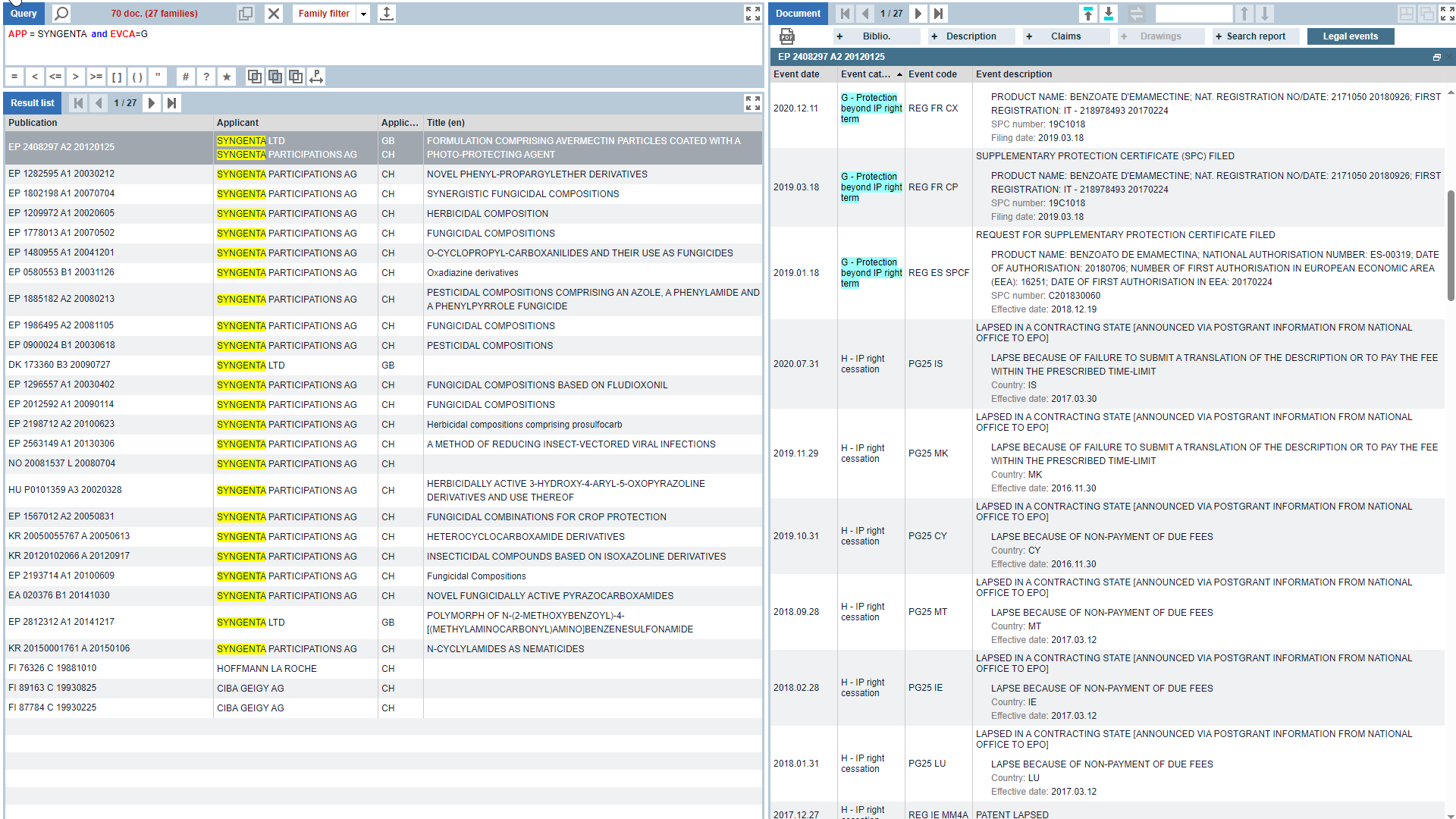Searching and understanding data on supplementary protection certificates (SPCs)
Part III: SPCs in legal event data
Pfizer's Lipitor (atorvastatin) is used to lower cholesterol and reduce the risk of heart disease. It is considered the most profitable drug of all time. The European patent was filed in 1987 and, with the standard patent term of 20 years from filing, you'd expect the patent to have expired in 2007. But protection was extended until 2012.
Or there's Spinosad, the highly effective agricultural insecticide developed by Dow AgroSciences. The related pesticidal formulations patent was filed in Europe in 2001 but is still in force, with protection extended to 2026.
The patent system offers the patent owner exclusive rights to the invention in exchange for public disclosure. After 20 years of patent protection, the technical knowledge is free to be used by everyone. However, in both these examples, protection was extended to 25 years.
In Part I, we saw how long it can take to research and develop new pharmaceuticals and obtain marketing authorisation, significantly shortening the effective period of patent protection. As "compensation", patent owners can request a supplementary protection certificate (SPC). These protect their inventions for up to five years after patent expiry.
Owners of approved plant protection products (PPPs or "pesticides"), which are active substances or combinations thereof, can also request SPCs.
How to find information on SPCs
The INPADOC worldwide legal event database is an invaluable source of SPC information. It records procedural changes related to SPCs, such as filings, grants and expirations, which you can view in Espacenet under Legal Events. This information can also be found in Global Patent Index (GPI), PATSTAT, Open Patent Services (OPS) and bulk datasets.
INPADOC legal event codes are grouped in categories, and about 300 event codes belong to category G – "Protection beyond IP term". This category also includes patent term extensions such as SPCs.
In GPI you can filter for category G legal events by using "EVCA" to define the event category. The following search, for example, returns around 2 100 patent families with EP applications featuring category G legal events.
 Fig. 1: Searching in GPI for documents with category G legal events.
Fig. 1: Searching in GPI for documents with category G legal events.
If you want to find SPCs for plant protection products, simply combine these search results with an additional entry for the classification.
Combining the main CPC/IPC class A01 (Agriculture) with INPADOC category G returns 370 families, and in these we find the PPP SPCs. Here are the top ten applicants in these 370 families:
 Fig. 2: Combining CPC/IPC class A01 with INPADOC category G: top ten applicants (GPI).
Fig. 2: Combining CPC/IPC class A01 with INPADOC category G: top ten applicants (GPI).
Applicants include industry leaders like Syngenta Crop Protection AG, a prominent agricultural technology company the EPO recently met with. Searching for Syngenta as an applicant within category G legal event data, we find 27 patent families (Fig. 3).
 Fig. 3: Applications from Syngenta with category G legal event codes (GPI).
Fig. 3: Applications from Syngenta with category G legal event codes (GPI).
The examples of Lipitor and Spinosad illustrate the critical role of SPCs in
extending the market exclusivity of both pharmaceuticals and PPPs. For researchers and industry professionals, databases like INPADOC and tools like GPI offer essential insights into extended patent protection, ensuring informed decision-making in the field of intellectual property.
Keywords: supplementary protection certificates, SPC, INPADOC, plant protection products, medicinal products
Further information
Related items

From lost in translation to insight – Part II: Office actions in machine-readable format in the EPO Global Dossier

First lecture of the year exploring the European Patent and Unitary Patent Registers

Unleash the full power of patent data

NEW ARTICLE: Why it can be difficult to find a patent document by searching by a number - and how to overcome this challenge

NEW ARTICLE: Don’t miss two essential lectures covering patent families and INPADOC legal event codes from Asia

Espacenet offers a range of materials to help users make the most of the tool

As the volume of patent documents grows worldwide, Espacenet continues to deliver open and reliable access

World Health Day 2025: Reflecting on newborn and maternal health through patent knowledge

PATSTAT EP Register documentation

Updates on the Unitary patent protection INPADOC legal events

Harmonisation of applicant names

Celebrating International Day of Happiness with a smile

Forecasting patent filings

Share your views before 17 March to help steer the Observatory’s future activities

Going round in circles on Pi Day: A short quiz for all!

Unlock powerful features to make your patent search faster, more accurate and more productive

The role of Europe in emerging technologies

Join the competition and submit your proposal by 16 March!

Celebrating the role of women and girls in science and technology communities

Unleash the full power of patent data: analysing emerging technologies

From lost in translation to insight – Part II: Office actions in machine-readable format in the EPO Global Dossier

First lecture of the year exploring the European Patent and Unitary Patent Registers

Unleash the full power of patent data

NEW ARTICLE: Why it can be difficult to find a patent document by searching by a number - and how to overcome this challenge

NEW ARTICLE: Don’t miss two essential lectures covering patent families and INPADOC legal event codes from Asia

Espacenet offers a range of materials to help users make the most of the tool

As the volume of patent documents grows worldwide, Espacenet continues to deliver open and reliable access

World Health Day 2025: Reflecting on newborn and maternal health through patent knowledge

PATSTAT EP Register documentation

Updates on the Unitary patent protection INPADOC legal events

Harmonisation of applicant names

Celebrating International Day of Happiness with a smile

Forecasting patent filings

Share your views before 17 March to help steer the Observatory’s future activities

Going round in circles on Pi Day: A short quiz for all!

Unlock powerful features to make your patent search faster, more accurate and more productive

The role of Europe in emerging technologies

Join the competition and submit your proposal by 16 March!

Celebrating the role of women and girls in science and technology communities

Unleash the full power of patent data: analysing emerging technologies

From lost in translation to insight – Part II: Office actions in machine-readable format in the EPO Global Dossier

First lecture of the year exploring the European Patent and Unitary Patent Registers

Unleash the full power of patent data